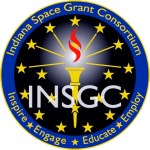Driven to detect dark matter: Jared Newton awarded INSGC graduate fellowship
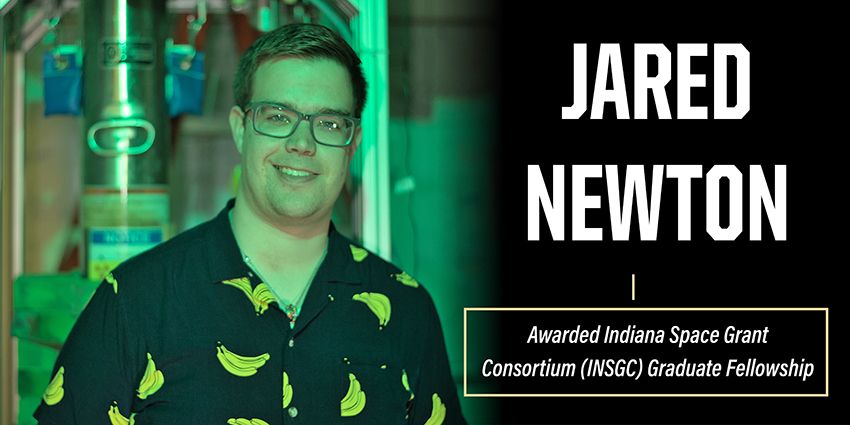
An interest in experimental dark matter physics brought Jared Newton, graduate student, to Physics and Astronomy. His research involves evaluating different types of sensors that could potentially be placed into a novel dark matter detector named Windchime. This ambitious project hopes to detect dark matter directly through its gravitational forces. Although this research could take many years to accomplish, it has landed Newton an Indiana Space Grant Consortium (INSGC) Graduate Fellowship.
The INSGC is one of the 52 Consortia that participate in the National Space Grant College and Fellowship Program. In the state of Indiana, INSGC is a source of NASA-related information, awards and programs. The INSGC awards students at various levels of study with fellowships and internships to help them develop their education and research.
“This fellowship is meant to fund research programs that give genuine research experience to undergraduate students from groups that are underrepresented in STEM,” says Newton. “To apply for it, I had to write proposals about my research work and describe how I planned to get undergraduate students involved with the project. By getting this fellowship, I am very excited to mentor and teach students outside of normal coursework, in an attempt to get people as interested in physics as I am.”
Currently, Newton is spending his summer completing research at Oak Ridge National Laboratory. He is working in the quantum sensing group under the advisement of Claire Marvinney, a collaborator on the Windchime project. He is attending Oak Ridge National Laboratory to learn about how to use quantum squeezed states of light to take measurements below the standard quantum limit. This will allow researchers to evaluate the sensitivity of sensors beyond what would normally be allowed.
He is advised at Purdue University by Professor Rafael Lang.
“Jared identified not only a disruptively new way to search for dark matter with the Windchime experiment, but he also found a way to bring his research at the Oak Ridge National Lab directly to class here on campus,” says Lang. “I am thrilled about both the scientific and educational aspects of his thesis!”
Newton, a native Hoosier, grew up and graduated from North Side High School in Fort Wayne, IN in 2017. He then attended Indiana University Bloomington and graduated in May 2021. As an undergraduate, Newton triple-majored in physics, astrophysics, and applied mathematics. His interest in experimental physics then led him to Purdue University. In his free time, he really enjoys spending time outdoors, especially bird watching or playing golf.
“I have always been interested in physics, especially astronomy, since I was a kid,” says Newton. “That was stimulated by a science museum called Science Central that was in my hometown growing up. In undergrad, I primarily focused on computational astronomy but, when I came to Purdue, I decided that I would like to try research that was more experimental in nature. That is why I chose dark matter research; it was experimental but still had a lot of implications in astrophysics.”
Once his education is complete, Newton is not quite sure what his next giant leap might be. Whether it be scientific research and development or mentoring students, the gateways to his future are open.
“I think that I would strive to work at a national lab or in industry after grad school. I really love teaching, so I will strive to get somewhere that will allow me to do that in the future,” says Newton.
About the Department of Physics and Astronomy at Purdue University
Purdue Department of Physics and Astronomy has a rich and long history dating back to 1904. Our faculty and students are exploring nature at all length scales, from the subatomic to the macroscopic and everything in between. With an excellent and diverse community of faculty, postdocs, and students who are pushing new scientific frontiers, we offer a dynamic learning environment, an inclusive research community, and an engaging network of scholars.
Physics and Astronomy is one of the seven departments within the Purdue University College of Science. World-class research is performed in astrophysics, atomic and molecular optics, accelerator mass spectrometry, biophysics, condensed matter physics, quantum information science, particle and nuclear physics. Our state-of-the-art facilities are in the Physics Building, but our researchers also engage in interdisciplinary work at Discovery Park District at Purdue, particularly the Birck Nanotechnology Center and the Bindley Bioscience Center. We also participate in global research including at the Large Hadron Collider at CERN, many national laboratories (such as Argonne National Laboratory, Brookhaven National Laboratory, Fermilab, Oak Ridge National Laboratory, the Stanford Linear Accelerator, etc.), the James Webb Space Telescope, and several observatories around the world.
Written by Cheryl Pierce, Communications Specialist
2023 NASA/INSGC Summer Interns
NASA/Indiana Space Grant would like to congratulate the 2023 NASA/INSGC Summer Interns.
These students were hand selected by NASA to complete a 10 week summer internship working and learning in various fields of study.
We Congratulate their hard work and wish them the best while learning about NASA and STEM.
- Olin Littlejohn PUWL at JPL
- Thomas Michael Deucher PUWL at GFSC
- Sajon Seaberg PUWL at ARC
- Jerry Varghese PUWL at WFF
- Jack Dempsey PUWL at JPL
- Bill Beverly PNW at ARC
- Jake Staker IUPUI at GRC
- Sydney Vallier PUWL at ARC
- Daphne Fauber-Krutulis PUWL at LaRC
- Ryan Lukow PUWL at Johnson
- Brandon Slater PUWL at GRC
Past INSGC Fellowship Awardee Inspiring Others
Madeline Shepley: From Eclipse Enthusiast to Planetarium Prodigy
April 5, 2023 by Joshua Lewis
Meet Madeline Shepley, a master’s student at Ball State University studying physics. Madeline’s fascination with the Universe began at a young age. As an adult, she has had the opportunity to engage in scientific research, create a planetarium show, and teach preschoolers and elementary school students about space.
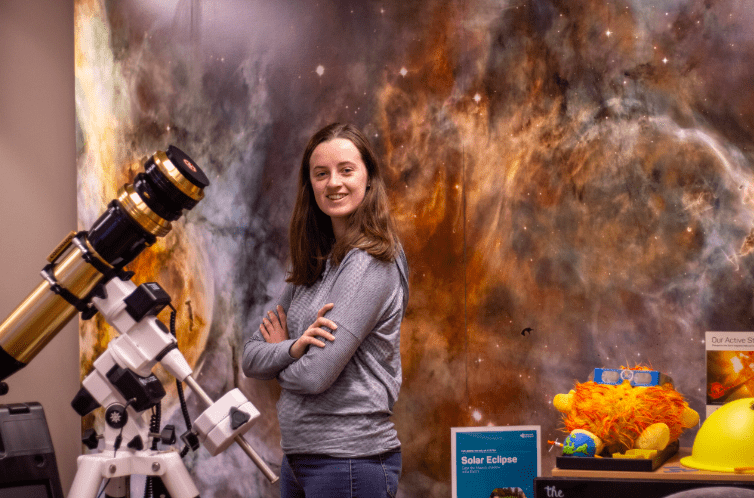
Student Spotlight
Madeline Shepley works as a planetarium assistant at Ball State University’s Charles W. Brown Planetarium. In this role, Madeline is responsible for facilitating scientific, hands-on activities before planetarium shows, presenting school group shows, and helping with special projects such as creating a banner of Muncie solar eclipse history as well as writing and producing new planetarium shows.
A passion for science and education is clear in Madeline’s desire to pursue a career in planetariums and science communication. She recognizes that this career path integrates her strengths in science, interpersonal interaction, and creativity. Her current role as a planetarium assistant allows her to gain valuable experience in this field and to develop a diverse range of skills that will serve her well in the future.
An interest in solar eclipses led Madeline to apply for a Master’s fellowship with the Indiana Space Grant Consortium, which focuses on solar eclipse education and safety. Her goal is to educate people about the rarity of solar eclipse events and how to safely view them, as well as to create a greater appreciation for the world around us through science and astronomy. Madeline uses analogies and stories to break down complex concepts and make them more relatable for her audience, whether it be preschoolers or adults.
Having personally witnessed the magic of a total solar eclipse during the August 2017 solar eclipse, Madeline hopes to inspire others to appreciate the wonders of the universe similarly. With her passion for science, communication, and creativity, Madeline will make a positive impact in her future career and continue to educate and inspire others.
What is a Solar Eclipse?
Eclipses occur when one celestial body passes through the shadow of another celestial body. During a solar eclipse, the Moon passes between the Sun and Earth, blocking all or part of the Sun for select viewers on Earth. There are three main types of solar eclipses: total, annular, and partial. In a total solar eclipse, the Moon covers the entire disk of the Sun, and viewers can watch without eclipse glasses during a time known as “totality.” During an annular solar eclipse, the Moon is farther away from Earth, making it appear smaller than the Sun and creating a ring around the Moon. During a partial solar eclipse, only part of the Sun appears to be covered by the Moon. All types of solar eclipses are dependent on the viewer’s location on Earth and are dynamic and evolving.
On April 8, 2024, Muncie, Indiana, will experience a total solar eclipse, which will be the first to be seen from the city since 957 CE. This eclipse will last for 3 minutes and 48 seconds and will envelop the city in deep twilight as the Moon hides the Sun. Following this event, Muncie residents will have to wait another 75 years to witness a similar experience without traveling far. Despite the fact that the 2099 solar eclipse will present more than 90% totality for Muncie, it is necessary to travel to a location such as Fort Wayne to observe true totality. Furthermore, it should be noted that the subsequent occurrence of a total solar eclipse in Muncie is projected to take place in the year 2505.
Trine recognizes distinguished students for Class of 2021
ANGOLA — Trine University has named Alexander Pessell, a biomedical engineering major from Arcadia, Ohio, as the winner of its Robert B. Stewart Award for its Class of 2021.
The university also has named Distinguished Students from each of its academic schools.
Alexander Pessell
The Robert B. Stewart Award is presented to the graduate who most clearly exemplifies the traditions and values of Trine University through achievement in scholarship, leadership and citizenship. Each academic school at Trine nominates a graduating senior for this award; Pessell represented the Allen School of Engineering and Computing.
Pessell maintained a 4.0 grade point average during his time at Trine. He completed a research experience for undergraduates during the summer of 2019 at the University of Maryland, and has been involved with research for Blaire Biomedical, a local company developing a handheld device that performs blood tests when linked to a smartphone.
He also was part of a group at Trine that worked on a research project funded by the Indiana Space Grant Consortium. Pessell wrote the application that was accepted for the grant funding.
He has presented research posters at Trine University’s STEM Symposium, the Biomedical Engineering Society national conference, the International Conference on Miniaturized Systems for Chemistry and Life Sciences, and the Food and Drug Administration.
Pessell has served as a resident director and resident assistant at Trine. He is part of the Tau Beta Pi engineering honor society, is past social media chair for Trine’s chapter of the Biomedical Engineering Society, serves on the Recruitment and Selection and Immersion Excursion committees for the Ehinger Fellows, and serves as president of Trine’s Alpha Eta Mu Beta biomedical engineering honor society, which he founded.
He serves as treasurer for Skull and Bones and vice president of Trine Thunder Ultimate Frisbee. He also played baseball at Trine for three years.
Off-campus, he volunteers at Cameron Memorial Community Hospital.
He was recently selected for the National Science Foundation Graduate Research Fellowship Program. The oldest science, technology, engineering and mathematics fellowship program in the United States, the GRFP, through a competitive selection process, recognizes and supports outstanding graduate students pursuing research-based master’s and doctoral degrees.
Evansville Museum of Arts, History and Science (Intern)
A collaboration between the Director Mitch Luman at the Evansville Museum of Arts, History and Science and Indiana Space Grant Consortium, has provided a wonderful 10 week summer internship for an outstanding Purdue University student. Carlisle Wishard, a graduate student working toward her Ph.D. in planetary sciences, is the newest intern at the Evansville Museum of Arts, History and Science. Ms. Wishard has a deep interest in the intersection of science research and community engagement and will be presenting programs & working on projects in the Museum’s Koch Immersive Theater and Planetarium. According to Mitch Luman, mentor and INSGC Affiliate Director, “Carlisle’s past museum experience and research interests are a perfect fit to contributing to education in a planetarium environment”. Support for internship is made possible by the Indiana Space Grant Consortium.
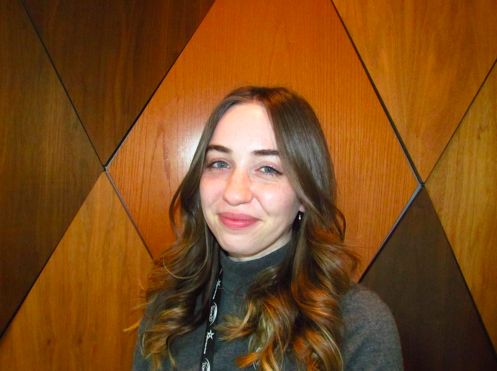
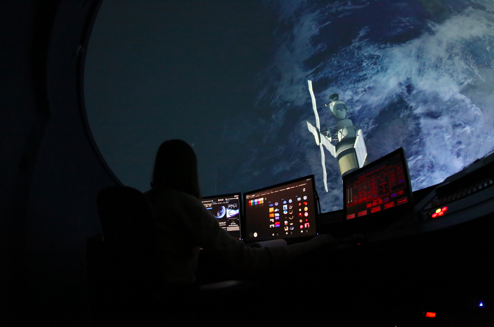
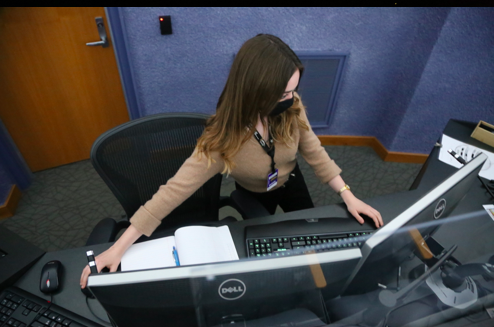
2021-22 Indiana Space Grant Consortium Fellowship Awardees
- G. Burrell (M) PFW
- B. Kimesey-Miller (M) IU
- I. Marrs (M) IU
- C. Toorongian (M) PNW
- E. Beilke (PhD) ISU
- R. Salvador (PhD) PU
- L. Organski (PhD) PU
- A. Meyer (PhD) PU
- A. Depoian-Baxter (PhD) PU
- M. Smith (PhD) IU
- L. Gray (PhD) IU
Project
Check out this awesome project below:
-
Project: Engaging Community College Student in research: Intestinal host defense mechanism
Trine University has participated in the NASA Human Exploration Challenge competition since 2014 as part of its senior capstone design course sequence. This provides our seniors and underclassman the opportunity to apply engineering skills and problem solving to a critical mission task for NASA, the future exploration of other planets by astronauts. The team pictured here for 2020-21 is designing and building a 2 person vehicle capable of navigating obstacles routinely found on our moon and other planets. The team appreciates the support of the Indiana Space Grant Consortium to complete this project and improve STEM skills.
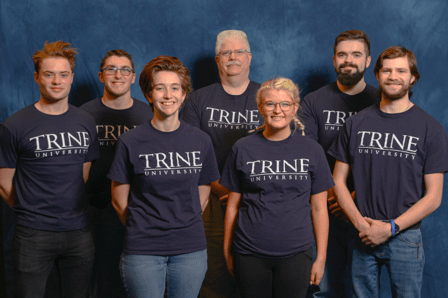
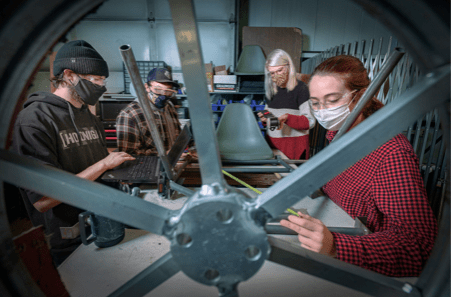
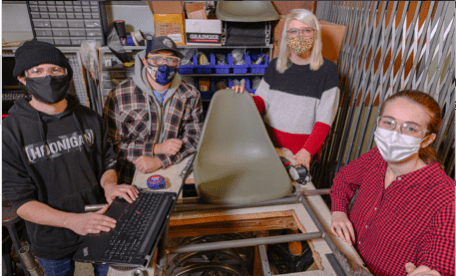
Will Steffel says he knew nothing about rotorcraft before the summer began, but the Trine University senior learned about them in a big way.
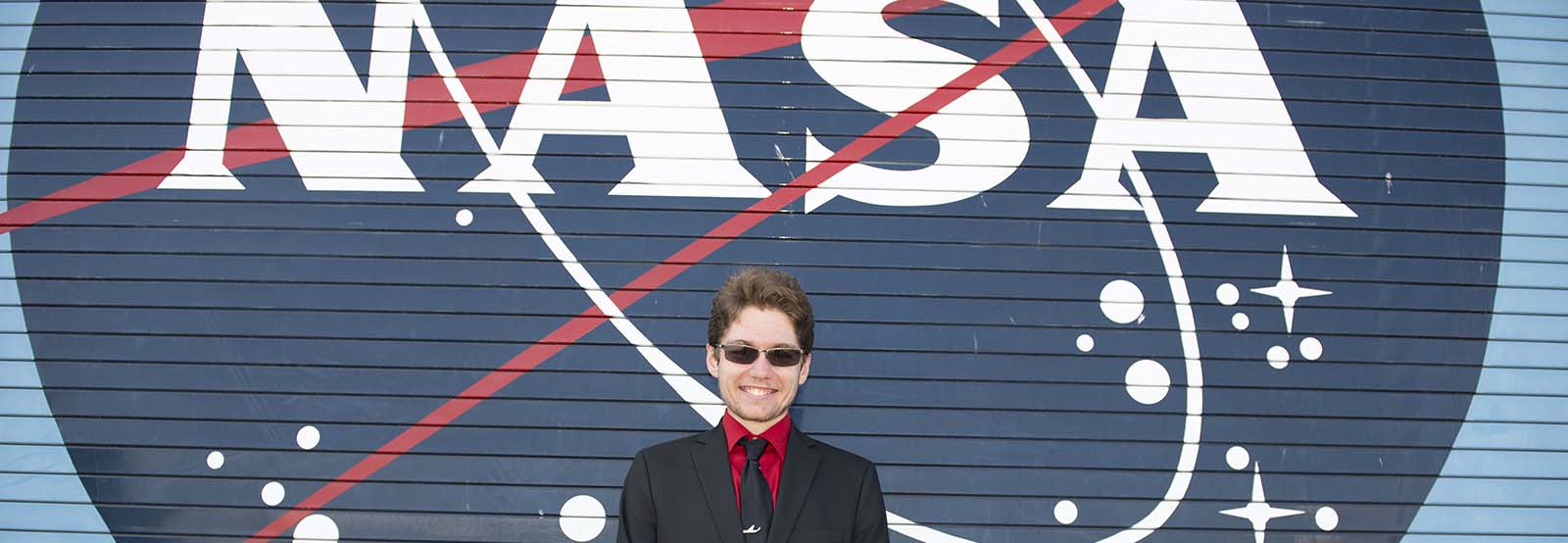
Trine University Team Designs a Human Powered Vehicle
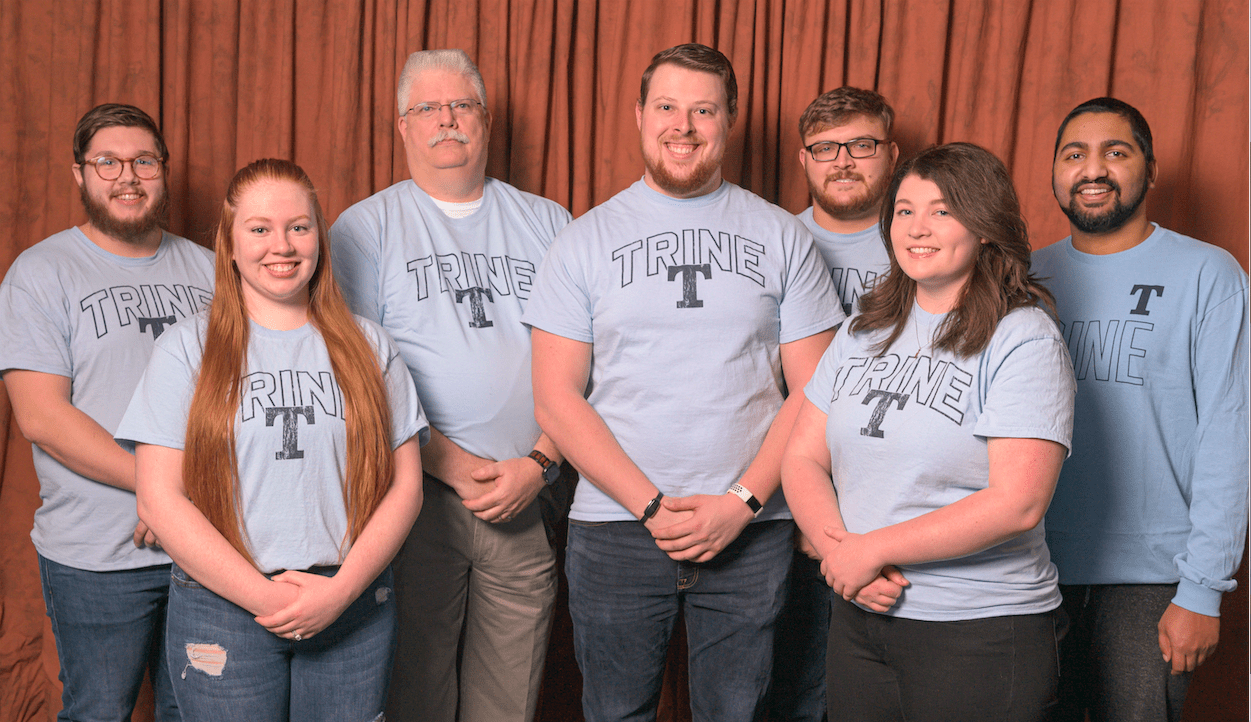
Congratulations!!!
This group of Trine University engineering students Alex Munger, Carma Cherry, Dr. Tim Jenkins (advisor), Ian Price, Tyler Blanton, Emily Atwell and Sandeeb Kurian fulfilling an opportunity to validate both the analytical and practical skills to “create a vehicle designed to traverse the simulated surface of another world” at the NASA Rover Challenge. Congratulations for all of their hard work!
